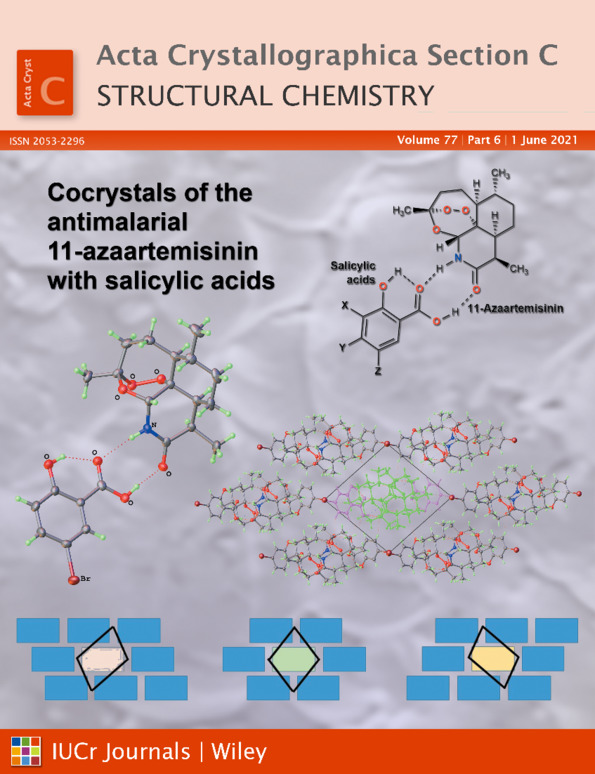Contributions of secondary alcohol–ketone O—H…O=C and furan–acetate Csp2—H…OOC synthons to the supramolecular packings of two bioactive molecules
Abstract
The crystal structures of rubescin D (1, C26H30O5) and monadelphin A (2, C30H36O11), bioactive molecules of the vilasinin and gedunin classes of limonoids, respectively, are reported for the first time and the synthons affecting their crystal packings are analyzed on the basis of their occurrences in molecules in the Cambridge Structural Database that share the same moieties. Rubescin D, 1, crystallizes in the space group P21 and its molecular structure consists of three six-membered rings A, C and D having, respectively, envelope, twist-boat and half-chair conformations, and three five-membered rings with half-chair (B and E) and planar conformations (F). Many synthons found in the crystal packing of 1 are in agreement with expectations derived from molecules displaying the same moieties. However, the secondary alcohol–ketone O—H…O=C synthon, which has a low occurrence (2.9%), contributes much to the layered packing, while the furan–ketone Csp2—H…O=C and secondary alcohol–epoxide O—H…OC2 synthons usually found in these compounds (occurrences of 20.6 and 17.6%, respectively) are missing. The packing of 1 is close to that of ceramicine B (3), but is completely different from that of TS3 (4), suggesting that the absence of the epoxide group in 3 would have favoured the furan–secondary alcohol Csp2—H…OH synthon and that the missing hydroxy group in 4, a strong hydrogen-bond donor, would have favoured the involvement of water molecules in the crystal packing. The molecular structure of monadelphin A, 2, consists of four six-membered fused rings (A, B, C and D) and one five-membered ring (E); they have twist-boat (A and C), chair (B), screw-boat (D) and planar (E) conformations. The molecule crystallizes in the space group P212121 with the contribution of many synthons usually found in compounds having the same moieties. However, the secondary alcohol–acetate O—H…OOC and secondary alcohol–ketone O—H…O=C synthons (occurrences of 16.7% each in these compounds) are missing. The furan–acetate Csp2—H…OOC synthon not observed in these compounds greatly contributes to the layered packing of 2. The layered packing is very close to those of 7-oxogedunin (5) and 6-dehydro-7-deacetoxy-7-oxogedunin (6), which both crystallize in the space group P21.




